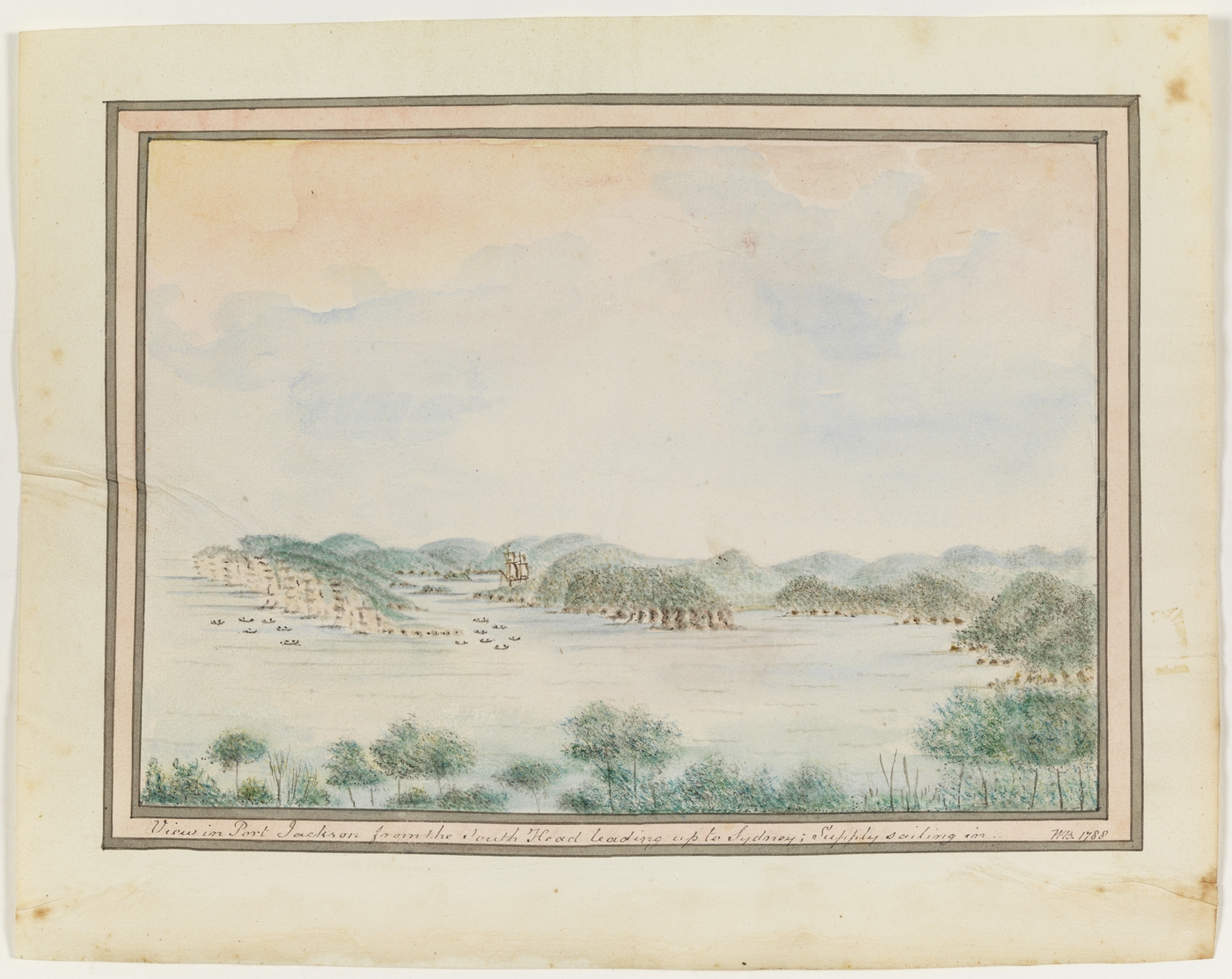The Dictionary of Sydney was archived in 2021.
View in Port Jackson from the South Head leading up to Sydney; Supply sailing in 1788

From the collections of the
(Drawings from William Bradley's journal 'A Voyage to New South Wales', December 1786 - May 1792; compiled 1802+', Mitchell Library)

